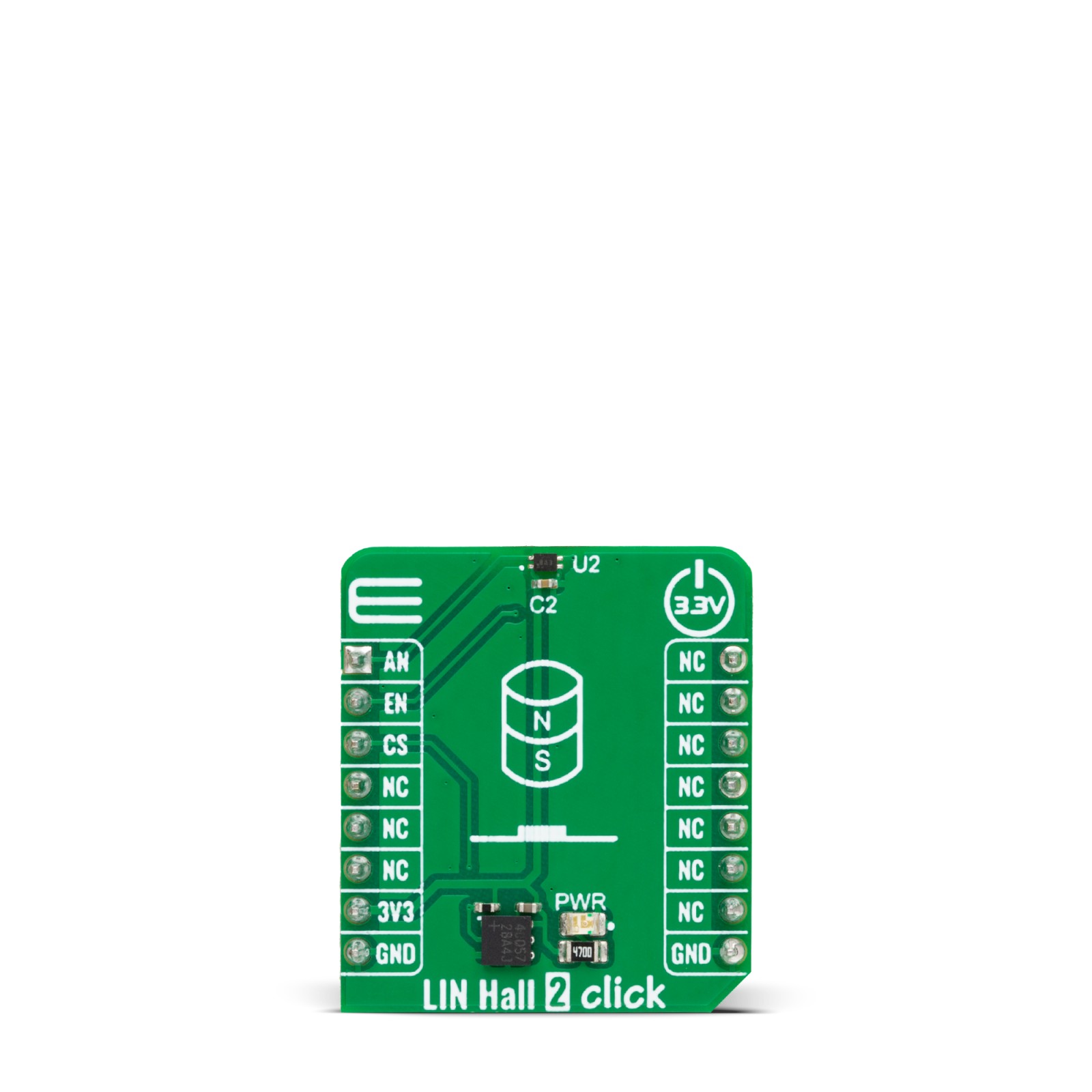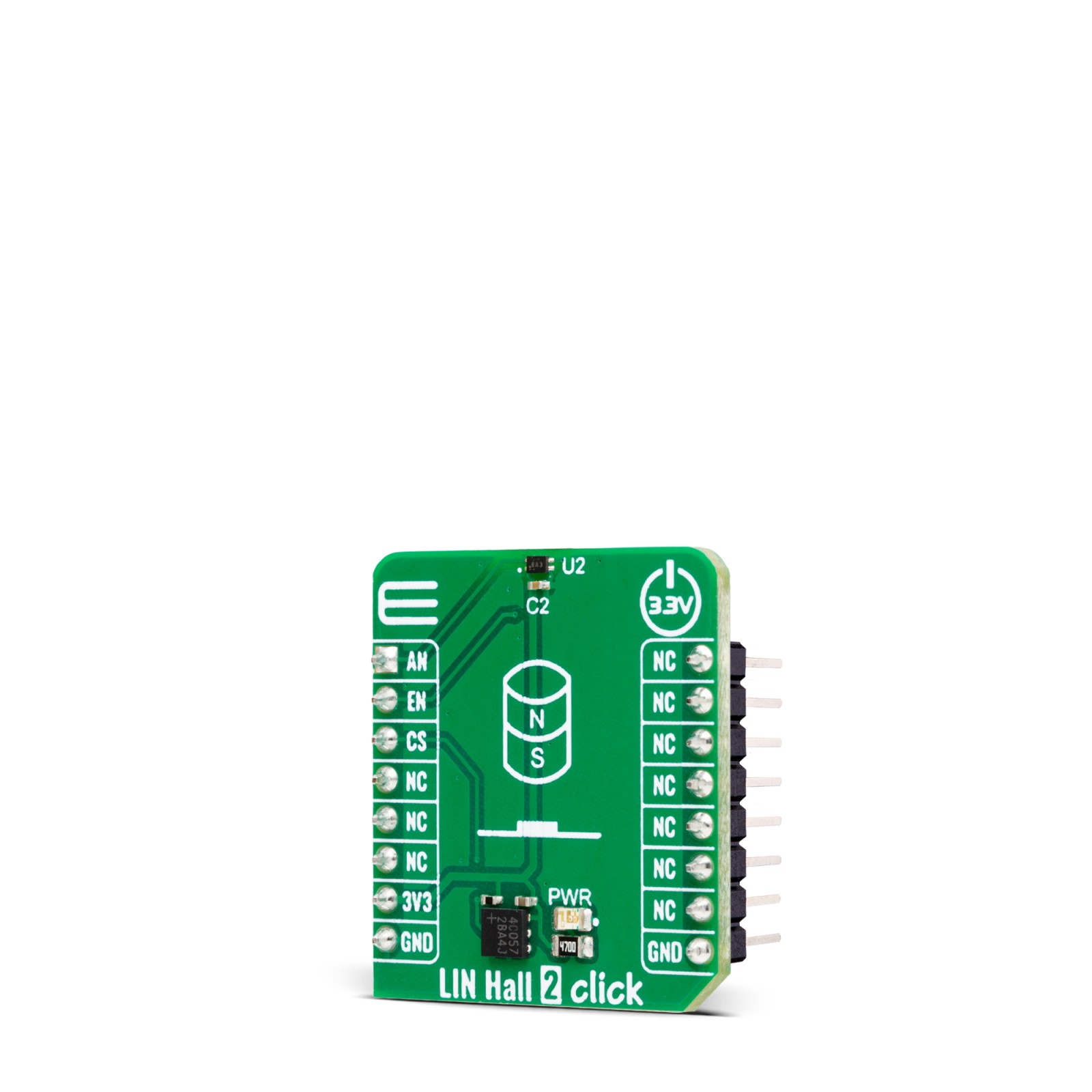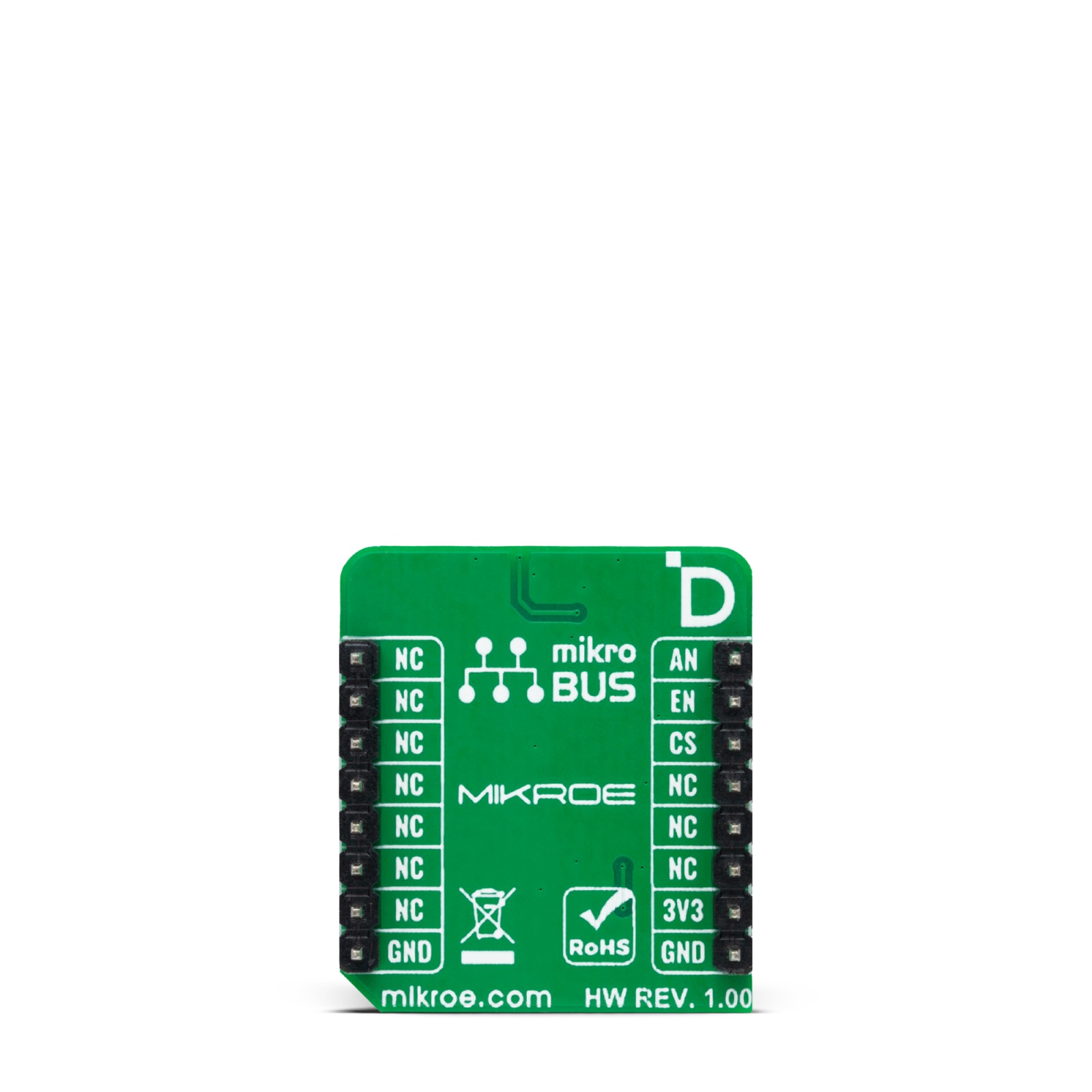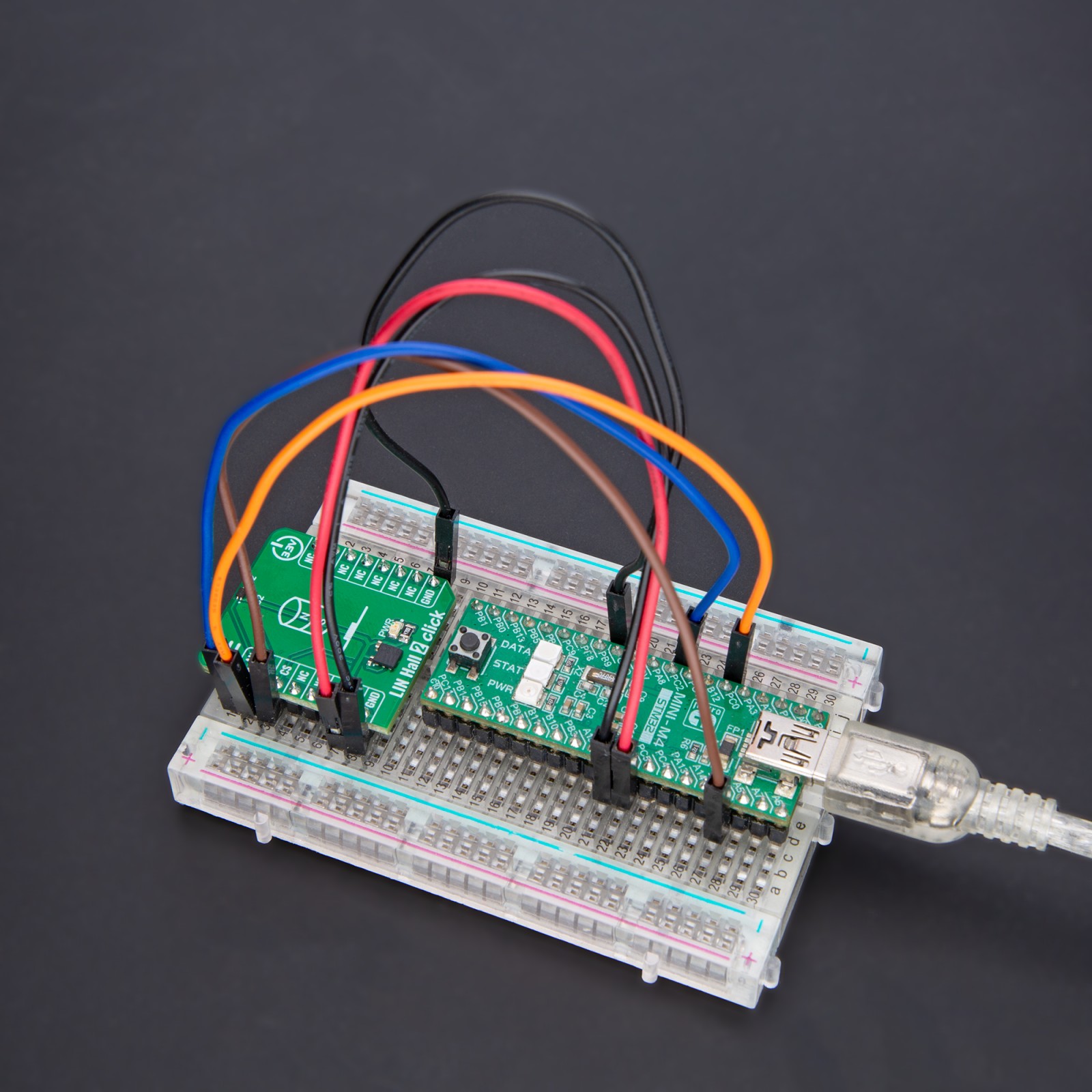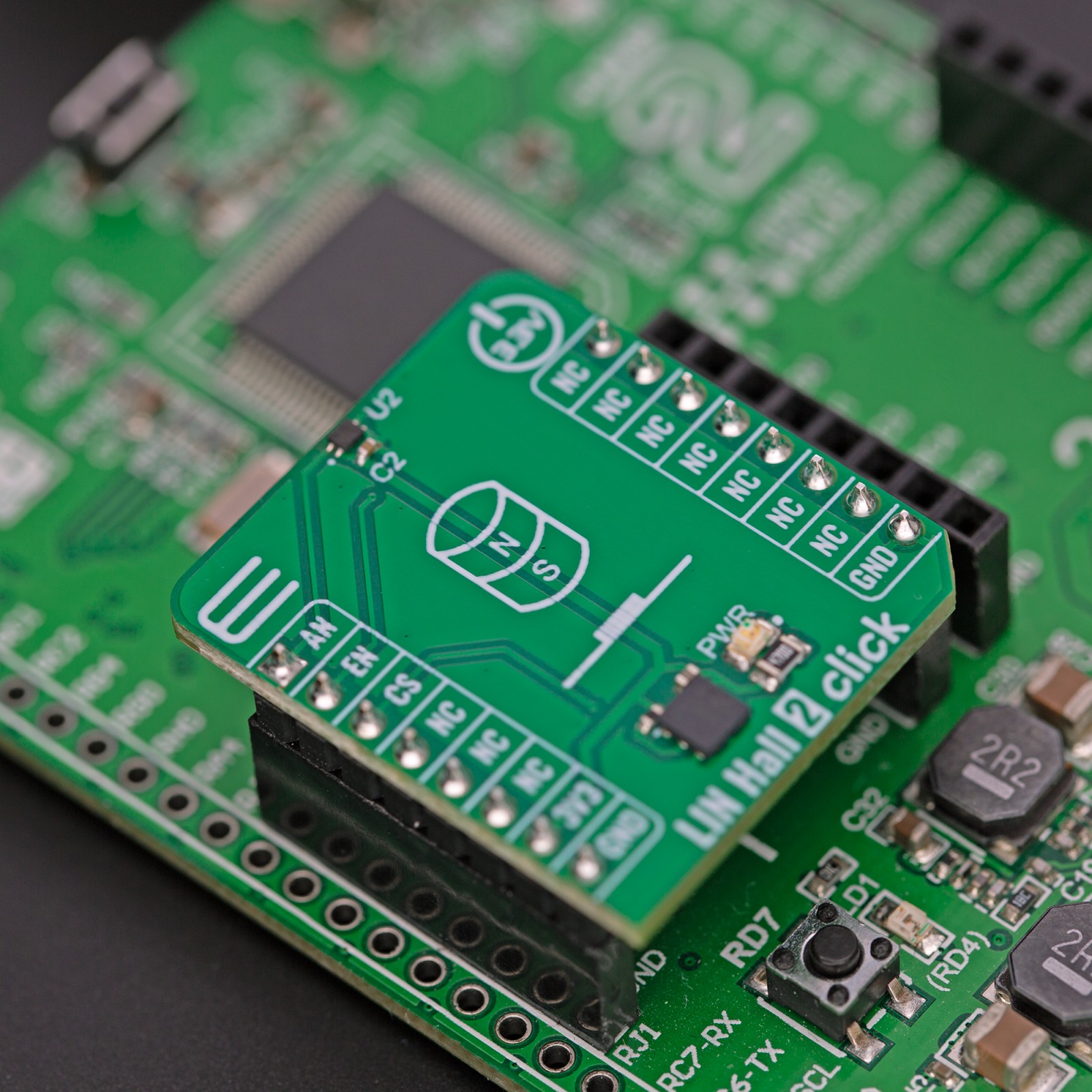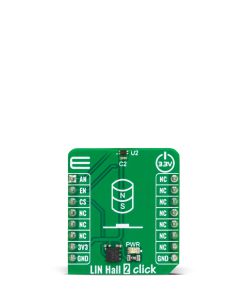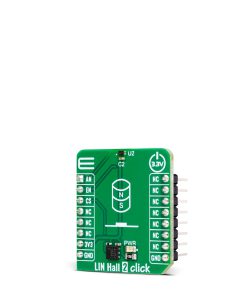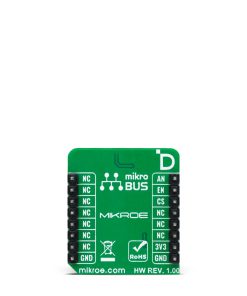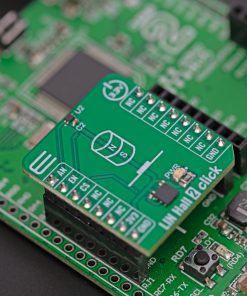LIN Hall 2 Click is a compact add-on board representing a linear Hall-effect sensing solution. This board features the TMAG5253, a low-power linear Hall-effect sensor from Texas Instruments. The sensor responds proportionally to the magnetic flux density with a magnetic sensitivity range of ±80mT and outputs proportional analog voltage. The sensor comes with a sensitivity compensation to support the temperature drift of a Neodymium magnet. This Click board™ makes the perfect solution for the development of highly accurate rotary and linear position detection in automotive and industrial applications.
LIN Hall 2 Click is fully compatible with the mikroBUS™ socket and can be used on any host system supporting the mikroBUS™ standard. It comes with the mikroSDK open-source libraries, offering unparalleled flexibility for evaluation and customization. What sets this Click board™ apart is the groundbreaking ClickID feature, enabling your host system to seamlessly and automatically detect and identify this add-on board.
 METHANE Click
1 × R335.00
METHANE Click
1 × R335.00  Hall Current 21 Click
1 × R840.00
Hall Current 21 Click
1 × R840.00  RN4678 Click
1 × R855.00
RN4678 Click
1 × R855.00  GSM/GNSS Click
1 × R1,700.00
GSM/GNSS Click
1 × R1,700.00 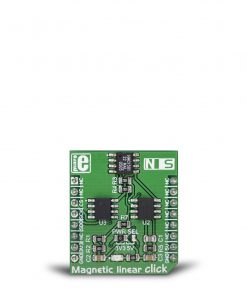 Magnetic linear Click
1 × R410.00
Magnetic linear Click
1 × R410.00  MP3 Click
1 × R485.00
MP3 Click
1 × R485.00 
